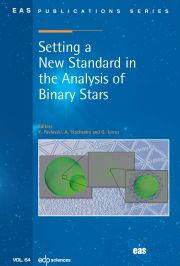Article contents
Numerical simulations of Optical Turbulence at low and high horizontalresolutionin Antarctica with a mesoscale meteorological model
Published online by Cambridge University Press: 24 December 2009
Abstract
It has already been demonstrated that a mesoscale meteorological model such asMeso-NH (Lafore et al. 1998) is highly reliable in reproducing 3D maps ofoptical turbulence (Masciadri et al. 1999; Masciadri & Jabouille 2001;Masciadri et al. 2004).Preliminary measurements above the Antarctic Plateau have so far indicated a pretty good value for theseeing: 0.27'' (Lawrence et al. 2004 ), 0.36'' (Agabi et al. 2006) or 0.4'' (Trinquet et al. 2008) at Dome C. However some uncertainties remain.That's why our group is focusing on a detailed study of the atmosphericflow and turbulence in the internal Antarctic Plateau.Our intention is to use the Meso-NH model to do predictions of theatmospheric flow and the corresponding optical turbulence in the internalplateau. The use of this model has another huge advantage: we have access toinformations inside an entire 3D volume which is not the case withobservations only.Two different configurations have been used: a low horizontal resolution (witha mesh-size of 100 km) and a high horizontal resolution with the grid-nestinginteractive technique (with a mesh-size of 1 km in the innermost domaincentered above the area of interest).We present here the turbulence distribution reconstructed by Meso-NH for 16nights monitored in winter time 2005, looking at the the seeingand the surface layer thickness.
Information
- Type
- Research Article
- Information
- Copyright
- © EAS, EDP Sciences, 2010
References
- 1
- Cited by

